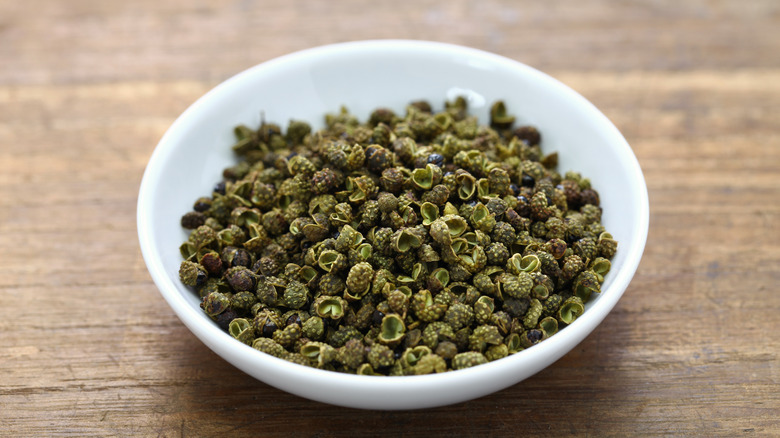The Most Under-Valued Spice, According To Top Chef's Shota Nakajima
Some spices just live in the light. While salt is the indisputable MVP, there's no denying there are some other spicy frontrunners in the cabinets of chefs and home cooks alike. 100 Days of Real Food notes the spices they use the most are paprika, cumin, cinnamon, chili powder, red pepper, garlic powder, onion powder, ginger, nutmeg, thyme, oregano, and Italian seasoning (which is really more a blend of spices than a spice itself).
And, according to Spices Inc., the popularity of a spice may vary by cuisine. For instance, Caribbean cuisine tends to work with a lot of allspice and achiote or annatto seeds, which you wouldn't find in most American dishes. Meanwhile, Chinese dishes tend to use more star anise and ginger, and Indian food takes advantage of cloves and coriander. But of all the popular spices on the shelf, there are bound to be other, less popular options that are left out. And as "Top Chef" contestant Shota Nakajima has shared, he believes there is one specific spice that is the most under-valued of them all.
Shota Nakajima believes peppercorn is the most undervalued
According to Nakajima's Instagram page, he has an affinity for Japanese cuisine. So, it was unsurprising that during an interview with Spiceology, he mentioned his love of a certain spice that is typically used in Asian food more often than not, the peppercorn. In particular, he noted "Sansho peppercorn — it's a Japanese-style of the Szechuan peppercorn and gives a great numbing effect. People have a hard time using it sometimes, but a little bit in the background is delicious — just a tiny bit."
While BBC described the Sancho peppercorn as a key ingredient in Chinese "málà" cooking, it hasn't quite taken off in others cuisines in the same way spices like pepper has (via Serious Eats). As Magic Plant Farms points out, Sansho peppercorn is different than the typical peppercorns you see in cooking as it offers a more pronounced taste with citrus flavors, including grapefruit and yuzu, and is more green in appearance. With such rave reviews and a mouthwatering description like that, it sounds like it might be time to start experimenting with the less beloved spice next time you're in the mood to cook.

